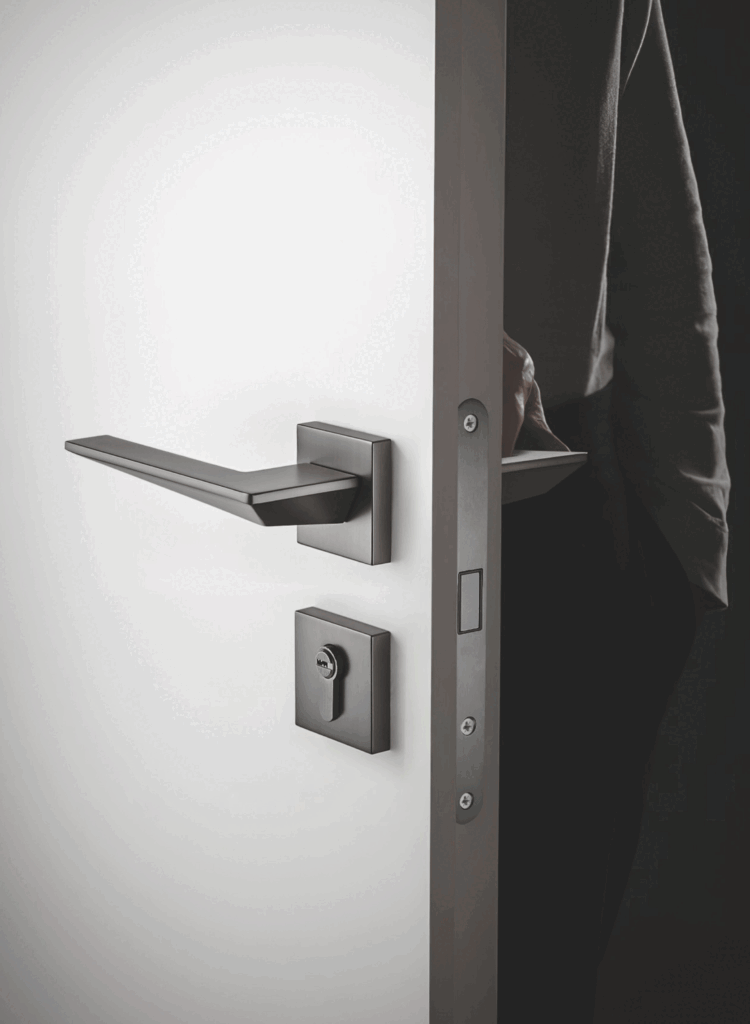A door stopper, though often overlooked, is an essential accessory that significantly contributes to both the functionality and aesthetic of a space. Whether you’re aiming to protect your doors and walls, enhance safety, or add a decorative touch, a door stopper can greatly improve the overall atmosphere and quality of your home or workplace. In this article, we will explore the key reasons that make door stoppers indispensable, discuss the various materials used in their construction, and review the different types and practical applications of these versatile tools.
Top 10 Reasons to Use a Door Stopper
- Prevents Damage:
The primary function of a door stopper is to protect both the door and the wall from damage. It ensures that the door doesn’t swing open too forcefully, avoiding dents, scratches, and wear on both surfaces. - Safety:
Door stoppers prevent doors from slamming shut, which can cause injury, especially in high-traffic areas or with young children around. - Convenience:
A door stopper can hold the door open, allowing easy passage and ventilation without needing to physically prop it open with your hands. - Noise Reduction:
It helps to reduce the noise caused by doors closing abruptly, creating a quieter, more comfortable environment, particularly in offices or homes where noise can be disruptive. - Energy Efficiency:
By holding the door open during the warmer months, it can help improve air circulation and reduce the need for air conditioning, contributing to energy savings. - Stability and Control:
The stopper provides extra control over how far the door swings, preventing it from damaging nearby furniture or fixtures. - Aesthetic Appeal:
Door stoppers come in various designs, from sleek and minimalistic to decorative, adding a touch of style to any room or hallway. - Versatility:
Suitable for both interior and exterior doors, a door stopper can be used in homes, offices, schools, hospitals, and commercial spaces. - Protects Furniture:
It keeps doors from unintentionally hitting furniture, walls, or fixtures, which can be especially helpful in tight spaces. - Affordable:
Door stoppers are relatively inexpensive, making them a cost-effective solution to a variety of common issues related to door movement.
Types of Materials Used for Door Stoppers
Door stoppers are made from different materials, each offering unique advantages. Below are the most common materials, along with their benefits:
- Stainless Steel:
Durable and Modern
Stainless steel door stoppers are highly durable and have a sleek, contemporary look. They are perfect for modern spaces and can withstand heavy use, making them ideal for commercial applications.
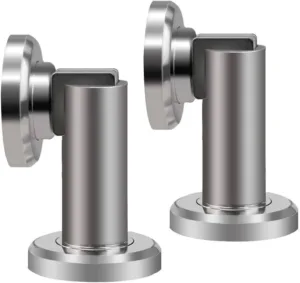
- Plastic:
Lightweight and Affordable
Plastic door stoppers are lightweight and affordable, making them an excellent choice for residential use. They are available in a range of colors and designs.
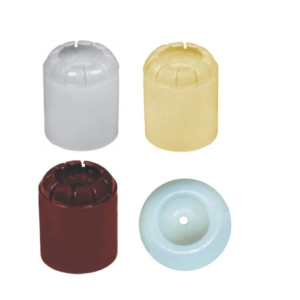
- Rubber or Silicone:
Soft and Non-Damaging
Rubber or silicone stoppers are soft, preventing damage to doors and walls. They are especially useful in homes with young children, as they don’t pose any risk of injury.

- Fabric:
Flexible and Decorative
Fabric-based stoppers are often used for doorstops in more decorative applications. They come in various colors, patterns, and sizes and are designed to blend with the interior decor.

Each material offers unique advantages depending on your needs, aesthetic preferences, and budget.
Types of Door Stoppers
There are several types of door stoppers, each designed for different installation needs and functions:
- Floor Door Stopper: A classic option, floor door stoppers are mounted on the floor and prevent doors from swinging too far. Ideal for doors in entryways or hallways.
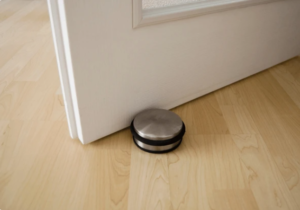
- Door Wedges:
Simple and effective, door wedges are placed under the door to keep it open or prevent it from moving. A practical solution for interior doors.

- Magnet Door Stopper:
These stoppers use magnets to hold the door in place, providing a clean, simple look with easy access when needed. Perfect for modern designs.
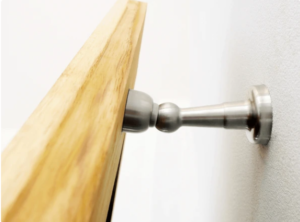
- Door Holder:
Mounted on the wall, these stoppers hold the door in an open position. Often used in areas where doors need to be left open frequently.
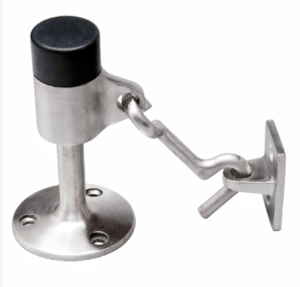
How to Install a Doorstop: A Step-by-Step Guide
🛠 What You’ll Need:
- Doorstop (spring, rigid, or wall-mounted type)
- Measuring tape
- Pencil
- Drill or screwdriver
- Wall anchors (if installing on drywall)
- Screws (usually included with the doorstop)
Step 1: Measure the Door Opening Range
Before choosing the spot, open your door gently to see how far it swings and where the knob or edge might hit the wall. Use a tape measure to find the ideal location for the stop to intercept the door before it hits anything.
Tip: The doorstop should stop the door at least 1–2 inches before the knob hits the wall.
Step 2: Mark the Mounting Location
Use a pencil to lightly mark the position where you want to install the doorstop. For baseboard-mounted doorstops, this is typically about 3–4 inches from the edge of the door when it’s fully open.
If you’re installing a wall-mounted type, mark the point on the wall where the door makes contact.
Step 3: Drill the Pilot Hole
Drill a small pilot hole on your marked location. This makes it easier to screw in the doorstop and helps prevent the wood or drywall from splitting.
If you’re working on drywall, use a wall anchor to make sure the screw will hold firmly.
Step 4: Attach the Doorstop
Screw the doorstop into the pilot hole by hand or with a screwdriver/drill. For spring-style models, twist the base until it’s tight. For hinge-mounted types, simply remove the door hinge pin, slide the stopper on, and reinsert the pin.
Check that it’s firmly attached and test the door to make sure it’s stopping where you want it to.

✅ Final Tips:
- Choose a rubber-tipped doorstop to prevent damage to doors.
- If using on tile or concrete, you may need a masonry drill bit and special anchors.
- Match the finish to your door hardware for a cohesive look.
Applications of Door Stoppers in Different Rooms
Door stoppers are versatile and can be used in various rooms across your home or commercial space. Here are a few examples:
- In Living Rooms and Bedrooms, door stoppers serve to protect walls and furniture by preventing doors from swinging open uncontrollably. By using soft-close door stoppers, you can also reduce noise, creating a quieter and more serene environment.
- In Kitchens and Bathrooms, door stoppers are ideal for holding doors open, allowing for better airflow and ventilation, especially when your hands are occupied with tasks like cooking or cleaning. They also help to avoid doors slamming shut, ensuring a safer and more efficient space.
- In Offices and Commercial Areas, door stoppers contribute to maintaining a professional, organized atmosphere. They also enhance the durability of doors in high-traffic spaces, reducing the risk of damage from frequent use while promoting safety and long-term functionality.
- Moreover, in Hallways or Entryways, door stoppers can prevent doors from unintentionally hitting walls or other doors, which is especially beneficial in narrow or busy corridors. For Hotel Rooms or Public Venues, they offer added comfort by allowing doors to stay open for guests without the risk of slamming, creating a welcoming and controlled environment.
Why Choose Umay’s Door Stoppers?
At Umay, we offer a wide selection of high-quality door stoppers designed to meet the needs of both residential and commercial clients. Our products are built to last, with materials chosen for durability, ease of use, and aesthetic appeal. Whether you’re looking for a minimalist stainless steel stopper or a decorative fabric option, we have something for every style and requirement.
For more information on our range of door stoppers, visit Umay’s Door Stopper Page.
Conclusion
Door stoppers, though often overlooked, play a crucial role in enhancing both the safety and functionality of any space. They are practical accessories that can also contribute to the overall aesthetics of a room. By exploring the various materials, types, and applications of door stoppers, you can make a well-informed decision that best suits your specific needs. Whether your goal is to safeguard walls, minimize noise, or introduce a touch of sophistication, you will find a door stopper that aligns perfectly with your requirements.
Ready to enhance your space with quality door stoppers? Visit Umay today to explore our collection.
Share This Story, Choose Your Platform!

